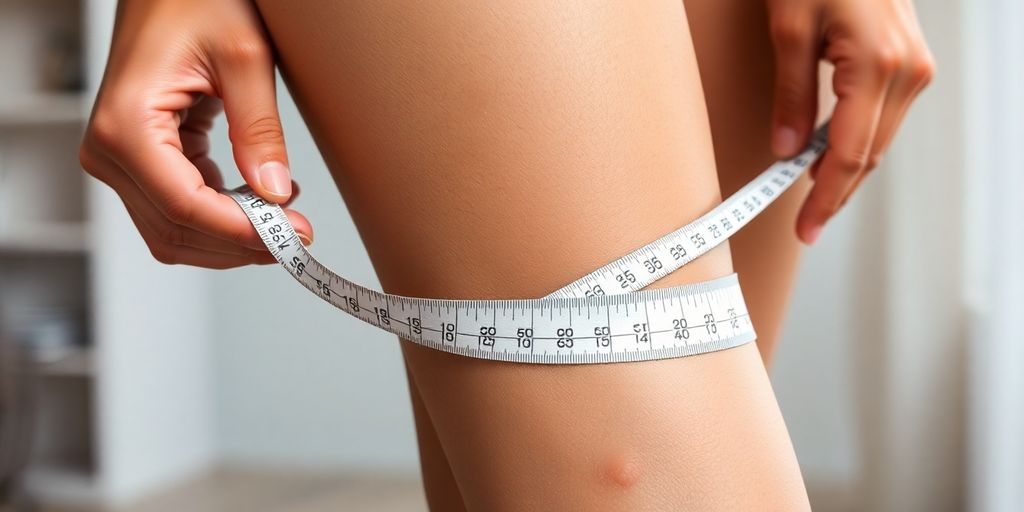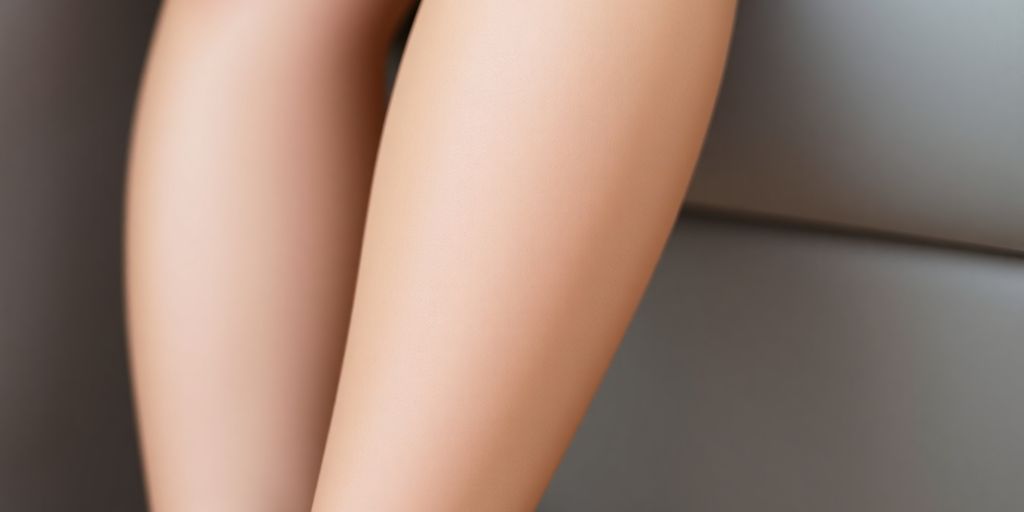Ever wondered, "How do I know what size compression socks to get?" It's a question many people have, and getting it right can make a big difference. Unlike regular socks, compression socks are all about the fit. If they're too loose, they won't do much good. If they're too tight, they can be uncomfortable and even cut off circulation. This guide will walk you through everything you need to know to pick the perfect pair, so you can get all the benefits without any of the hassle.
Key Takeaways
- Measure your calf circumference and foot length accurately. Don't just guess or go by shoe size.
- Understand different compression levels and what they mean for your activity. Higher numbers mean more squeeze.
- Think about what you'll be doing. Shorter socks might be good for some things, longer for others.
- A proper fit means snug, but never painful. Listen to your body and look for signs of discomfort.
- Consider the material and features. Some socks are better for sweat, others for support.
Understanding Compression Levels
Selecting the Right Compression Level
Choosing the correct compression level is super important. It's not just about picking a random number; it's about matching the compression level to your specific needs and activities. Different activities and conditions benefit from different levels of compression. For example, someone who stands all day at work might benefit from a lower level of compression, while a marathon runner might need something stronger. It really depends on what you're trying to achieve – whether it's reducing swelling, improving circulation, or enhancing performance.
Impact of Compression on Performance
Compression socks can actually affect your performance, but it's not a one-size-fits-all kind of thing. Some studies suggest that compression can improve blood flow, which could lead to better oxygen delivery to your muscles. This, in turn, might help you run longer or recover faster. However, it's also important to note that not everyone experiences these benefits. Some people might not notice any difference at all, and others might even find compression uncomfortable. It's all about finding what works best for you. Here's a quick look at how different levels might affect you:
| Compression Level | Typical Use Cases | Potential Benefits |
|---|---|---|
| Light | Everyday wear, mild swelling | Improved comfort, slight increase in circulation |
| Moderate | Moderate exercise, travel | Reduced fatigue, enhanced muscle support |
| Firm | Intense workouts, significant swelling | Improved performance, faster recovery |
Benefits of Graduated Compression
Graduated compression is where the sock is tighter at the ankle and gradually loosens as it goes up the leg. The idea behind this is to help push blood back up towards your heart, fighting against gravity. This can be especially helpful for people who are prone to swelling or have poor circulation. The mmHg measures the tightness of compression garments, which can enhance blood circulation, decrease swelling, and alleviate discomfort. It's like giving your legs a gentle squeeze all day long, which can make a big difference in how they feel, especially after a long day on your feet.
Graduated compression isn't just a fancy term; it's a design that's meant to improve blood flow and reduce swelling. By applying more pressure at the ankle and less as you move up the leg, these socks help your veins do their job more efficiently. This can lead to less fatigue and discomfort, especially if you're on your feet for extended periods.
Accurate Measurements for Optimal Fit
Getting the right size compression sock is super important. If they're too loose, they won't do anything. Too tight, and you'll be miserable. It's all about finding that sweet spot where they're snug but not cutting off your circulation. So, how do you nail it?
Measuring Calf Circumference
Okay, first things first: your calf. Grab a flexible measuring tape – the kind you use for sewing works great. Stand up straight and measure around the widest part of your calf. Make sure the tape is snug but not digging into your skin. Write that number down; it's your magic number for calf circumference. This measurement is key, especially for knee-high socks, because it determines how well the sock will stay up and how effective the compression will be.
Determining Foot Length and Width
Next up, your feet. You probably know your shoe size, but that's not always enough. Shoe sizes can vary between brands, so it's best to actually measure your foot. Place your foot on a piece of paper and trace around it. Then, measure the length from your heel to the tip of your longest toe. Also, measure the width at the widest part of your foot. These measurements will help you find socks that fit your foot properly, preventing bunching or slipping.
Why Shoe Size Alone Is Not Enough
Relying on shoe size alone is a recipe for disaster. Think about it: shoe sizes aren't standardized. A size 9 in one brand might be a size 9.5 in another. Plus, shoe size doesn't account for calf circumference, which is crucial for compression socks.
Using just your shoe size is like guessing the ingredients for a cake. You might get close, but it's probably not going to turn out right. Taking accurate measurements ensures a much better fit and, therefore, better performance and comfort.
Here's a quick table to illustrate why measurements matter:
| Measurement | Why It's Important |
|---|---|
| Calf Circumference | Determines the fit and effectiveness of the sock. |
| Foot Length | Prevents bunching and ensures proper toe placement. |
| Foot Width | Avoids overly tight or loose fit around the foot. |
So, ditch the guesswork and get measuring! Your feet (and calves) will thank you.
Choosing the Right Sock Type
Mid-Calf Versus Knee-Length Socks
Okay, so you're staring at a wall of compression socks, and the first question hits you: shorties or the tall ones? Mid-calf socks are good for general use, like if you're on your feet all day or want a little extra support during a workout. Knee-length socks? Those are the big guns. They target more of your leg, offering better support for longer runs or more intense activity. It really boils down to how much compression you need and where you need it.
Considerations for Specific Activities
Not all activities are created equal, and neither are compression socks. If you're a runner, you might want socks with extra cushioning in the heel and toe. For hiking, look for something durable that can handle rough terrain. And if you're into weightlifting, a sock that provides good arch support can make a difference. Think about what your body needs during that specific activity. It's not a one-size-fits-all kind of thing.
Material Composition and Features
Let's talk materials. You've got nylon, polyester, spandex, and blends of all three. Nylon is tough, polyester wicks away moisture, and spandex gives you that snug fit. The blend is where it gets interesting. Some socks have extra features like targeted compression zones, padded heels, or reinforced toes. Here's a quick rundown:
- Nylon: Durable but less breathable.
- Polyester: Great for moisture, less support.
- Spandex: Stretchy and supportive.
Choosing the right material is important for comfort and performance. Consider the weather, the intensity of your activity, and your personal preferences. A blend might give you the best of all worlds, but it depends on the specific mix.
Ensuring a Proper Fit
Getting the right fit with compression socks is super important. If they're too tight, they'll be uncomfortable and could even cut off circulation. Too loose, and you won't get the compression benefits you're after. It's a bit like Goldilocks and the Three Bears – you need them just right!
The Importance of a Snug Fit
A snug fit is key for compression socks to do their job properly. They need to apply the right amount of pressure to improve blood flow. Think of it like a gentle hug for your legs. If they're sliding around, they're not doing anything. A good fit also helps prevent blisters and keeps the socks from bunching up in your shoes. Make sure you measure your calf circumference to get the right fit.
Avoiding Overly Tight or Loose Socks
It's a balancing act. You want that snug fit, but you don't want to feel like your legs are being squeezed. Overly tight socks can cause pain, tingling, or even numbness. Loose socks, on the other hand, won't provide the necessary compression and might as well be regular socks. Here's a quick guide:
- Too Tight: Leaves deep marks, causes pain, restricts movement.
- Too Loose: Slides down, doesn't provide support, feels like regular socks.
- Just Right: Snug but comfortable, stays in place, provides gentle pressure.
Recognizing Red Flags for Discomfort
Listen to your body! If you experience any of these, your socks probably don't fit right:
- Tingling or numbness in your toes.
- Pain or excessive pressure.
- Deep indentations on your skin after removing the socks.
- Skin irritation or redness.
If you notice any of these red flags, take the socks off immediately. Don't try to "tough it out." It's better to find a pair that fits properly than to risk discomfort or potential health issues. Sometimes, it's worth trying wide shoes if you're experiencing discomfort.
Personalizing Your Compression Sock Choice

Assessing Your Foot Type and Shape
Different feet react differently to compression. If you have high arches, look for socks with extra support in that area. Flat feet might need socks that offer more overall stability. It's not just about size; it's about how the sock interacts with your unique foot structure. Think about it like shoes – what works for one person might be terrible for another. Knowing your foot type is the first step in finding the perfect fit. This will help you find the [best compression socks](#c986] for your needs.
Matching Socks to Training Intensity
The intensity of your training should influence your sock choice. A light jog doesn't require the same level of support as a marathon. For shorter, easier runs, a moderate compression level might be enough. But for those long, hard training sessions, you'll probably want something with more compression to aid recovery. It's all about finding the right balance between support and comfort.
Experimenting for Best Results
Finding the right compression sock is a bit of trial and error. Don't be afraid to try different brands, materials, and compression levels. What works for your friend might not work for you. Pay attention to how your legs feel during and after your workouts. Here are some things to consider:
- Try different compression levels to see what feels best.
- Wear the socks during various activities to assess their performance.
- Keep a log of your experiences to track what works and what doesn't.
It's important to remember that everyone's body is different. What feels great to one person might feel awful to another. The key is to listen to your body and find what works best for you. Don't be afraid to experiment until you find the perfect fit.
Key Factors in Compression Sock Selection

Choosing the right compression socks involves more than just picking a color. It's about understanding what makes a sock effective and suitable for your needs. Let's break down the key things to consider.
Durability and Longevity
Compression socks aren't disposable, so you want them to last. Look for socks made from high-quality materials that can withstand repeated use and washing. Reinforced heels and toes are a plus, as these areas tend to wear out first. A good pair should maintain its compression level and shape after many wears. I've had some that stretched out after only a few washes, and that's just a waste of money.
Breathability and Moisture-Wicking
Nobody wants sweaty feet trapped in socks. Breathability is key to comfort, especially during intense activities or in warm weather. Moisture-wicking fabrics like merino wool, nylon blends, or CoolMax help keep your feet dry by drawing sweat away from the skin. This reduces the risk of blisters and odor. For optimal comfort and support, select compression socks that offer good airflow and the correct compression level to avoid sweaty feet and excessive pressure.
Support for Specific Arch Types
Different feet need different support. If you have high arches, look for socks with extra cushioning and support in the arch area. Flat feet might benefit from socks that offer more overall stability. Some socks even have targeted compression zones designed to support specific areas of the foot. Knowing your arch type can really help you narrow down your choices. It's like finding the perfect shoe fit, but for your socks.
It's easy to overlook the importance of quality when buying compression socks. But investing in a well-made pair can make a huge difference in comfort, performance, and how long they last. Don't just grab the cheapest option; do a little research and choose socks that are built to last.
A Step-by-Step Guide to Choosing
Choosing the right compression socks can seem tricky, but breaking it down into steps makes it much easier. It's about finding the perfect balance of support, comfort, and functionality for your specific needs. Let's walk through a simple process to help you make the best choice.
Determining Your Activity Needs
First, think about what you'll be doing while wearing the socks. Are you running a marathon, standing all day at work, or recovering after a workout? Different activities call for different levels of compression and sock features. For example, someone needing travel compression socks will have different needs than a marathon runner. Knowing your primary use case is the first step.
- High-Impact Activities: Look for higher compression levels and durable materials.
- Everyday Wear: Opt for moderate compression and comfortable, breathable fabrics.
- Recovery: Consider lighter compression and features that promote blood flow.
Evaluating Sock Features and Benefits
Next, consider the specific features and benefits that matter most to you. Do you need extra arch support? Are you prone to blisters and need moisture-wicking properties? Think about the material composition, compression level, and any special features like cushioned soles or seamless toes. Material is a key factor here.
It's easy to get caught up in the marketing hype, but focus on what truly benefits you. Read reviews, compare features, and don't be afraid to ask questions before making a purchase.
Testing for Comfort and Support
Finally, once you've narrowed down your options, it's time to try them on. Pay attention to how the socks feel on your feet and legs. Do they feel snug and supportive, or are they too tight or too loose? Walk around, move your feet, and make sure they're comfortable in various positions. If possible, wear them for a short period to see how they feel during your activity of choice.
Here's a quick checklist:
- Check the fit around your calf and ankle.
- Ensure the toe box isn't too tight.
- Walk around to assess overall comfort.
Wrapping It Up
So, figuring out the right size for your compression socks doesn't have to be a huge headache. It's really about getting those measurements right and knowing what you need them for. Don't just guess your shoe size and call it a day. Take a few minutes to measure your calf and foot, and think about if you're using them for everyday wear or something more intense. Getting the fit just right means they'll actually do their job, helping your legs feel better and maybe even helping you recover faster. It's a small step that can make a big difference, honestly.
Frequently Asked Questions
Is it better to size up or down in compression socks?
Compression socks should fit just right. Unlike regular socks, getting the size perfect is important so they aren't too loose or too tight. If they don't fit well, they won't work as they should. The right size means the socks can do their job. If they're a bit too big, the pressure will be lighter. If they're too small, the pressure will be stronger.
How do I know what size compression socks to buy?
To find the right size, you'll need to measure your calf. Stand up straight and wrap a tape measure around the widest part of your calf. For mid-calf socks, your shoe size is usually enough. But for knee-length socks, you'll need both your shoe size and your calf measurement.
Why can't I just use my shoe size to pick compression socks?
It's super important to measure your calf, not just rely on shoe size. Shoe sizes can be different between brands, and they don't tell you how wide your calf is. Compression socks need to fit snugly around your calf to work correctly.
Do different activities need different types of compression socks?
Yes, different activities might need different socks. For example, if you're doing something really active like running a marathon, you might want socks with more compression. For everyday wear or lighter activities, a lower compression level might be better.
How can I tell if my compression socks fit properly?
A good fit means the sock feels snug but comfortable. It shouldn't be too tight that it pinches or leaves deep marks, and it shouldn't be so loose that it bunches up or slides down. If you feel any pain, numbness, or tingling, the socks are likely too tight.
When should I wear compression socks?
You can wear compression socks for most activities, including running, walking, traveling, or even just sitting for long periods. They help with blood flow and can make your legs feel better. However, if you have certain health problems, it's always a good idea to chat with a doctor before wearing them.




Share:
Finding Lasting Chronic Venous Insufficiency Relief: A Comprehensive Guide
Optimizing Your Life with Effective Compression Support for Lymphedema